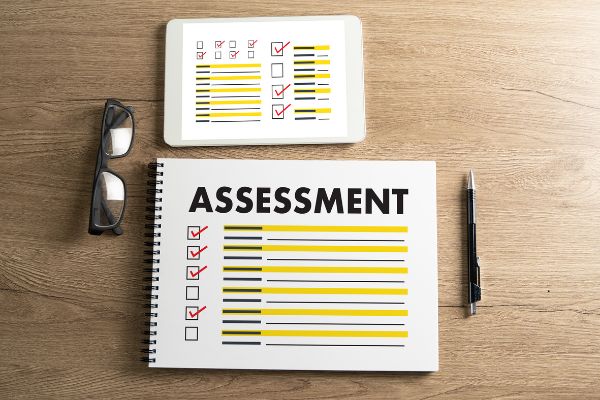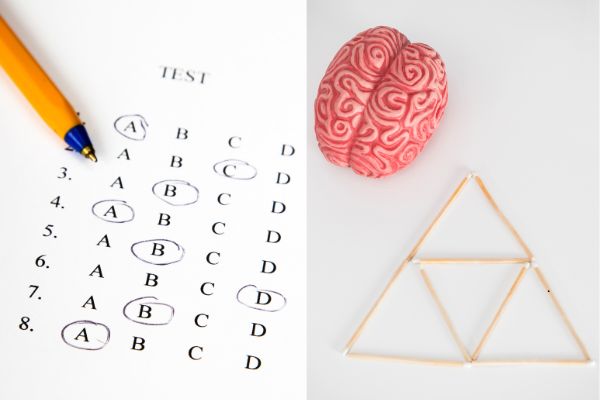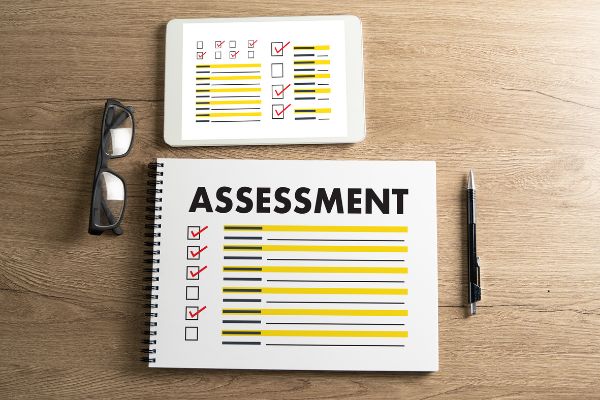When Should Your Child Get A Psychoeducational Assessment?
A psychoeducational assessment is a comprehensive evaluation that measures your child’s intellectual abilities and academic skills to identify learning differences, developmental delays, and mental health concerns. The best age to start psychoeducational testing is 8 years old, when assessment tools become more accurate and school demands reveal learning challenges that weren’t previously obvious.
These assessments help children access classroom accommodations like extra time on tests and quiet testing spaces. They can also identify specific learning disabilities including dyslexia (reading problems), dyscalculia (math difficulties), and dysgraphia (writing challenges). Early identification is crucial for academic success. The evaluation process typically takes 4-6 hours across multiple sessions, with results available in 1-2 weeks. Psychoeducational assessments benefit students of all ages, from elementary school through college and workplace settings. Common assessment types include intelligence testing (WAIS-IV, WISC-V), achievement testing (WIAT-IV), ADHD evaluations (Conners-4), autism spectrum assessments (ASRS), and specialized brain function testing. At FC Psych Experts, we provide thorough assessments to help identify your child’s unique needs and strengths.

Understanding Psychoeducational Assessment
Getting a complete picture of your child’s needs requires a thorough assessment. We look at their strengths and challenges to help them succeed. Working with you, your child, and their teachers, we create detailed evaluations. These assessments identify key issues and provide helpful recommendations for school and home success.
Schools most often request psychoeducational assessments for their students. We typically conduct these evaluations for children starting at age 8. The main goal is helping kids get classroom accommodations and modifications they need. These assessments can identify several important areas including intellectual giftedness and learning disabilities. They also spot developmental delays, behavioral problems, and emotional concerns. Social issues are another key area we examine during these clinical evaluations.
Accommodations allow children to learn the same content with helpful support tools. Common accommodations include extra time on tests and quiet spaces for exams. Students might also get computer access for writing assignments and other helpful tools. Modifications change the actual learning material to match the student’s abilities better. These changes create different learning expectations that fit each student’s needs. Examples include shorter assignments, reduced test material, and alternative project options.
Teenagers and young adults also benefit from psychoeducational assessments for future success. These evaluations help them access university, college, and workplace support services. They can receive similar accommodations and modifications to those used in schools. College students may qualify for special grants and financial aid programs. They need to register with their school’s Accessibility Services to access these benefits. Some students may also benefit from cognitive behavioral therapy to develop coping strategies alongside their accommodations.
What Is the Best Time to Get Your Child Assessed?
You can get psychoeducational assessments done at many different ages throughout life. Most psychologists suggest starting around age 8 for the best results. At this age, testing tools work more accurately and school becomes more demanding. These increased demands often reveal learning differences that weren’t obvious before. Getting an early assessment helps your child receive support when they need it most. However, it’s never too late to seek help through professional evaluation. Teenagers and adults also see significant benefits from these comprehensive assessments. This is especially true when they’re starting college, university, or entering the workforce. The National Institute of Mental Health emphasizes that early intervention improves long-term outcomes.

The Two Main Parts of a Psychoeducational Assessment
Intelligence Testing: Intelligence testing helps us understand your child’s general thinking abilities. We compare their results to other children of the same age. For example, if your child scores in the 80th percentile on intelligence tests, this means something important. Their Full Scale Intelligence Quotient (FSIQ) score is higher than 80% of children their age. This comparison helps us understand how your child’s mind works compared to their peers.
Achievement Testing: Achievement testing shows us how well your child uses their intelligence in school subjects. We look at their skills in reading, writing, math, and speaking abilities. Sometimes a child’s achievement scores are much lower than their intelligence scores. When this happens, the psychologist works to figure out why this gap exists. They then create a plan to help bridge this difference between ability and performance using evidence-based approaches outlined by the American Board of Professional Psychology and the National Academy of Neuropsychology.
What Happens During Your Child’s Psychoeducational Assessment?
Both types of assessments include several different parts to get a complete picture. We conduct clinical interviews and observe your child during testing sessions. Formal testing uses professional test kits designed for psychological evaluation. Parents and teachers complete questionnaires about your child’s daily functioning and behavior. We also consult with other professionals who work with your child.
The assessment process includes a variety of tasks to evaluate different areas of functioning. The child may engage in activities such as answering questions, solving puzzles, drawing, and participating in social interactions. Breaks are provided as needed to help maintain focus and comfort. Parents and teachers are asked to complete questionnaires covering academic performance, daily behavior, emotional health, social skills, and developmental concerns.
Scoring and interpretation typically take one to two weeks after the assessment is completed. Findings are shared in a feedback session, during which options for receiving a written report are discussed. If a specific type or length of report is required, appropriate recommendations are provided. The time needed for report preparation and any associated fees are clearly outlined in advance. All assessment procedures adhere to ethical standards set by the APA Ethics Code and relevant professional organizations.

Different Types of Psychoeducational Assessment Tools We Use
Psychological assessment tools are professionally designed to measure different abilities and skills. They also help us understand personality traits and characteristics that affect learning. The most common tests we use include intelligence tests and academic skills assessments. We also use in-depth tests for specific thinking functions like memory and attention. Visual-motor coordination tests and online brain function tests are other important tools. Personality tests and Brain Dominance questionnaires round out our assessment options. Based on your child’s needs, we suggest a specific combination of tests. This battery of tests helps answer the questions you have about your child’s abilities. All our assessment procedures follow guidelines established by the American Psychological Association to ensure accuracy and reliability. Below are some of the main assessments we use and what they measure.
WAIS-IV Intelligence Test
The WAIS-IV (Wechsler Adult Intelligence Scale – Fourth Edition) measures intelligence in older teens and adults. This test works for people between ages 16 and 90 years old. It tests similar areas as the WISC-V but is designed for older individuals. We can use this assessment to identify giftedness and intellectual disabilities. It also helps us spot developmental delays and specific learning disabilities. These include dyscalculia (math difficulties), dysgraphia (writing problems), and dyslexia (reading challenges).
WIAT-IV Achievement Test
The WIAT-IV (Wechsler Individual Achievement Test Fourth Edition) measures academic achievement levels. This test works for children, teenagers, and adults between ages 8 and 51. The WIAT-IV includes components that test reading, writing, math, and oral language skills. We usually use this assessment together with one of the intelligence tests mentioned above. This combination helps us identify giftedness, intellectual disabilities, and developmental delays effectively. It also helps us spot specific learning disabilities like dyscalculia (math difficulties). We can also identify dysgraphia (writing problems) and dyslexia (reading challenges) through this testing. The Learning Disabilities Association of America provides valuable resources for families dealing with these learning differences.
Neurocognitive Testing
Neurocognitive Testing evaluates brain function for people from age 8 to 90 years old. This assessment measures many different thinking abilities that affect daily life. It tests verbal memory, visual memory, and overall memory skills effectively. The test also measures reaction time, attention abilities, and thinking flexibility. Processing speed, social awareness, and reasoning skills are other important areas we examine. Executive functioning, working memory, and sustained attention are also key components. Simple attention skills and motor speed round out this comprehensive evaluation. Clinical questionnaires accompany this testing to provide additional important information. Neurocognitive testing helps identify if people struggle with attention or memory problems. It can also spot issues related to brain injury, sleep problems, or pain. PTSD, anxiety, and depression symptoms can also be identified through this testing. The Brain Injury Association of America provides valuable resources for understanding these conditions.
MMPI-3 Personality Assessment
The Minnesota Multiphasic Personality Inventory-3 (MMPI-3) is a validated and standardized self-report assessment tool. This test helps mental health professionals diagnose various mental health conditions accurately. People complete this assessment by answering questions about themselves and their experiences. The results provide valuable insights into personality patterns and potential mental health concerns that may require therapy services or family therapy when family dynamics are involved.
QEEG Brain Mapping
A QEEG assessment maps the electrical activity in your brain to understand how it functions. This test shows activation patterns and helps identify cognitive problems that affect daily life. We usually complete this brain assessment for teenagers and adults who need detailed evaluation. For children, we use a simpler EEG assessment that’s more age-appropriate. During the test, we place electrodes on the scalp to record brain wave activity. These recordings create a detailed map of your brain’s electrical activity patterns. When we combine QEEG results with other assessment methods, we get stronger evidence. This helps us identify issues related to ADHD, anxiety, depression, and PTSD. Learning disabilities, sleep problems, and memory issues can also be detected. Concussion, traumatic brain injury (TBI), and post-concussive syndrome are other conditions we can identify.
ABAS-3 Adaptive Behavior Assessment
The ABAS (Adaptive Behavior Assessment System – Third Edition) is a comprehensive, research-based assessment tool. This test looks at adaptive behavior and daily living skills in children and teenagers. The results provide evidence for people struggling with learning disabilities and ADHD symptoms. It can also identify problems related to speech, language, and motor function difficulties. Neuropsychological disorders and general developmental delays are other areas this assessment covers effectively. We usually send questionnaires to parents and teachers when this assessment is needed. This approach gives us information from multiple perspectives about your child’s daily functioning.
ASRS Autism Spectrum Assessment
The ASRS (Autism Spectrum Rating Scales) is a comprehensive, research-based assessment for autism evaluation. This test looks at specific behaviors, symptoms, and other aspects related to Autism Spectrum Disorder. We can use this assessment for young children and teenagers between ages 2 and 18. The test helps us understand if your child shows signs of autism spectrum conditions. We usually send questionnaires to parents and teachers when this assessment is recommended. This gives us a complete picture of your child’s behavior across different settings.
Conners-4 ADHD Assessment
The Conners-4 (Conners 4th Edition) is a thorough assessment of ADHD characteristics in children and teenagers. This test works for young people between ages 6 and 18 years old. The assessment helps identify if your child has specific behaviors or symptoms related to ADHD. It can also detect symptoms of anxiety and depression that often occur alongside ADHD. Testing can identify if your child has ADHD with hyperactivity and impulsivity problems. It can also spot ADHD with attention problems or ADHD with both types combined. We usually send questionnaires to parents, teachers, and the young person when appropriate. This multi-perspective approach gives us the most accurate assessment results possible. CHADD provides excellent resources for families dealing with ADHD challenges.
Take Action for Your Child’s Success
Psychoeducational assessments provide the roadmap your child needs to unlock their full potential. Starting at age 8, these comprehensive evaluations identify strengths and challenges across multiple areas. The detailed testing process reveals learning differences, emotional concerns, and developmental needs that impact daily life. With professional assessment results, you can access classroom accommodations, support services, and specialized interventions. Don’t wait for struggles to worsen – early identification leads to better outcomes. Whether your child needs help with learning disabilities, ADHD, autism spectrum conditions, or other challenges, the right assessment opens doors to success. Our team follows best practices established by the Florida Psychological Association and other professional organizations. Schedule a consultation today to discuss which evaluation best fits your child’s unique needs and start building their path to academic and personal achievement.
FAQs
How long does a psychoeducational assessment take to complete?
Most psychoeducational assessments take 4-6 hours of direct testing time with your child. We usually spread this testing across multiple sessions to prevent fatigue. Additional time is needed for parent and teacher questionnaires before testing begins. After testing, scoring and interpretation typically takes 1-2 weeks before your feedback session. For more information about assessment timelines, you can reference guidelines from Mental Health America.
Will my child’s school automatically provide accommodations after the assessment?
Schools are legally required to consider assessment results for accommodation decisions. However, they make the final determination based on their own criteria. Private assessments provide strong evidence for your child’s needs during school meetings. You may need to advocate for specific accommodations based on the assessment recommendations.
How much does a comprehensive psychoeducational assessment cost?
Assessment costs vary depending on the specific tests needed and report requirements. Most comprehensive evaluations range from $2,000 to $4,000 for complete testing. Insurance coverage depends on your specific plan and medical necessity requirements. We discuss all costs upfront during your initial consultation before beginning any testing.
Can adults get psychoeducational assessments for workplace or college support?
Yes, adults can receive psychoeducational assessments for college and workplace accommodations. Many assessments work for people up to age 90 years old. College students often qualify for grants and financial aid through disability services. Workplace accommodations help adults succeed in their careers with proper documentation.
What’s the difference between accommodations and modifications in school settings?
Accommodations help your child learn the same material with supportive tools and methods. Examples include extra time on tests, quiet testing spaces, and computer access. Modifications change the actual learning material to match your child’s ability level. This includes shorter assignments, reduced test content, and alternative project options.

